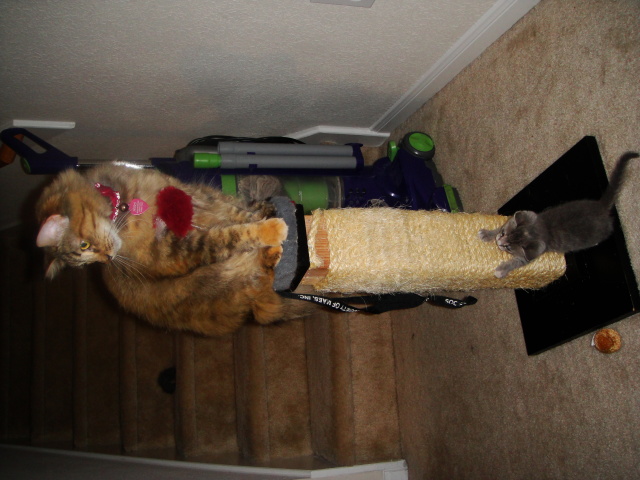QuestionI'm going off to college soon where I'll be living in an apartment. I want to bring my Siamese with me; she just turned fifteen recently. She's my little baby and I can't leave her behind.
My boyfriend would also like to bring his cat. His kitty is three or four years old. If the cat stays where he is now, he would get treated badly and may even die due to the dogs that are there.
Is there a best way to transition two stranger cats to a place unknown to them?
AnswerHi Kiera,
The move shouldn't be too bad. The biggest thing you can do to help her acclimate is to keep her in one room of the new place at first. Make sure she has all of her stuff there. Food, water, litter box and sleeping bed if she has one. The other cat should have her own area also. You can introduce them after about a week in the new place. Follow the these instructions and all should go well.
When cats are being introduced, patience and allowing adequate time for acclimatization are of utmost importance. Cats are often best introduced through closed doors, through which each cat can smell the other. This allows the cats to familiarize themselves with the scent of the other cat but not view each other. One or both of the cats may hiss or growl. The cats should remain separated until no aggression is exhibited at the door. Rubbing each cat with a towel and then switching towels to transfer body scent from cat to cat can also facilitate introduction. The face and tail should be rubbed where scent glands are located. Also, switching litter boxes can help a cat become familiar with the scent of the other cat.
If things are going well, a visual introduction can be attempted. Visual introduction is best done at a distance, and the use of highly palatable food is recommended to facilitate the process. The animals are fed a portion of a savory food while they are a safe distance from each other. It is important to keep the cats a minimum of 8 to 10 feet apart and watch for agitated responses. Such responses include ears held back; tail twitching or fast tail movements; vocalizations, such as growling or yowling; and dilated pupils. Cats that exhibit any of these responses should be separated and reintroduced further apart. If things go well, the cats can be moved one to two feet closer at the next introduction. With the continued use of feeding, this process is slowly continued until the cats are side by side.
You can also introduce the cats by placing one cat in a cage or crate while the other cat is free to investigate. The cage occupant should be alternated to allow each cat the opportunity to investigate without fear of being injured.
When the number of cats in a home increases, behavior problems can result. Taking adequate time to introduce the cats can avoid some of these problems. It is also important to have an adequate number of litter boxes available. The rule of thumb is one litterbox must be provided for each cat. Placement of additional boxes is critical. If the cats do not get along, make sure to have different locations for litter boxes in multiple-cat households.
Finally, old cats and solitary cats do best if they are routinely allowed a certain amount of time alone and undisturbed. This may mean placing the cat in a spare room with food, water, and litterbox for four to six hours daily or at least three times a week.
You also need to give your cat her special time with you during the week. Also pick up a product called Feliway and spray it around the new home. It acts as a kitty tranquilizer. Good luck and let me know how it goes.
Ciao, Karen

 Kitten weaning questions
QuestionI just recently rescued a kitten of about 4 wee
Kitten weaning questions
QuestionI just recently rescued a kitten of about 4 wee
 Kitty Peeing
Question
Howie
Our kitten is about 8 months old
Kitty Peeing
Question
Howie
Our kitten is about 8 months old
 Senile Cat?
Question
Chloe
I have a cat thats about 18 1/2 years ol
Senile Cat?
Question
Chloe
I have a cat thats about 18 1/2 years ol
 My cat, Spots
QuestionQUESTION: Hi. My cat Spots is a wonderful cat.
My cat, Spots
QuestionQUESTION: Hi. My cat Spots is a wonderful cat.
 Cat meaowing after spayed
QuestionQUESTION: Hello, I am having a problem with my
Cat meaowing after spayed
QuestionQUESTION: Hello, I am having a problem with my